The muscles of the pelvic floor consist of multiple muscle groups and fascia that enclose the pelvic floor, and there are four related bony landmarks - the pubic symphysis, the coccyx and the ischium on either side. A healthy pelvic floor is like a held-up tent, with these bones acting as the pillars.
The muscles of the pelvic floor not only hold organs in the pelvis, such as the uterus, bladder and rectum, but also play a role in the functioning of bladder and rectum and during sex. Therefore, they are used or help with the sex, urination and other body functioning.
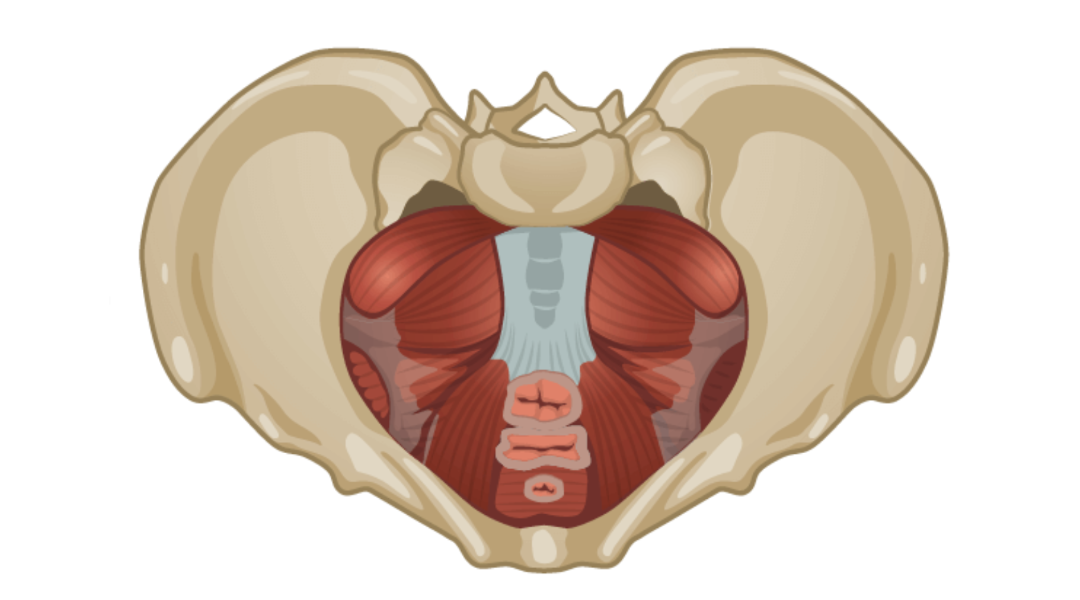
Some functions of the pelvic floor muscle
1. Control urination and bowel movement
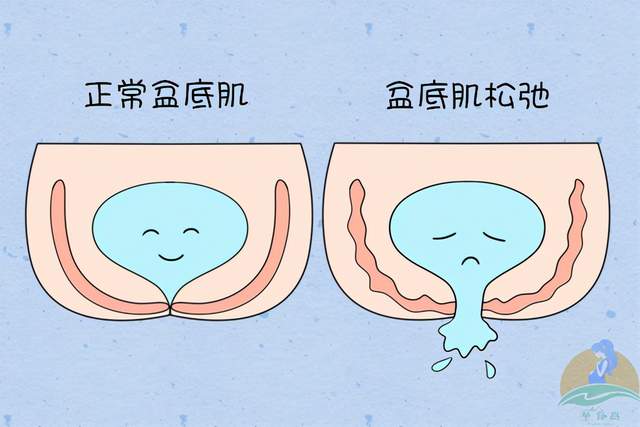
Muscles of the pelvic floor- Normal (left) Muscles of the pelvic floor- Weak (right)
When muscles of the pelvic floor function normally, they contract and relax in a way that urination and defecation can be well controlled. However, once they are loose or weak, it becomes difficult to keep control, especially when a person has to laugh, cough, sneeze and when abdominal pressure increases, urine will flow out involuntarily, sometimes accompanying frequent and urgent urination.
2. Support organs in the pelvis
Once the muscles of the pelvic floor grow weak, the prolapse of pelvic organs become possible, such as uterine and vaginal wall prolapse. Under this circumstance, patients often have a feeling of vaginal sagging with abdominal distension and back pain. In severe cases, organs may even slip out of the vagina.
3. Protect the spine
The muscles of the pelvic floor do not work alone; they work closely with transversus abdominis, the deepest of the abdominal muscles, the multifidus muscle, the deep muscles of the back, and the diaphragm. They tighten and upper lift, stabilizing the pelvis and joints of lumbar vertebra in conjunction with the core muscles. Together with strong muscles of the trunk, they support the spine and prevent people from being injured during ADL.
excio- pelvic trainer from Germany
Training WITHOUT intimacy contact and WITH visual biofeedback
According to several studies, the pelvic floor muscle training has been well accepted to be the first choice to treat stress incontinence among conservative therapies, with an improvement rate ranging from 65% to 75%. By repeated and selective tensing and relaxing of the specific muscle, the strength of the pelvic floor muscle is enhanced, resulting in increased muscle strength and muscle thickness, increased coordination between pelvic floor muscles and improved neuromuscular system to support the urethra, vagina and rectum.
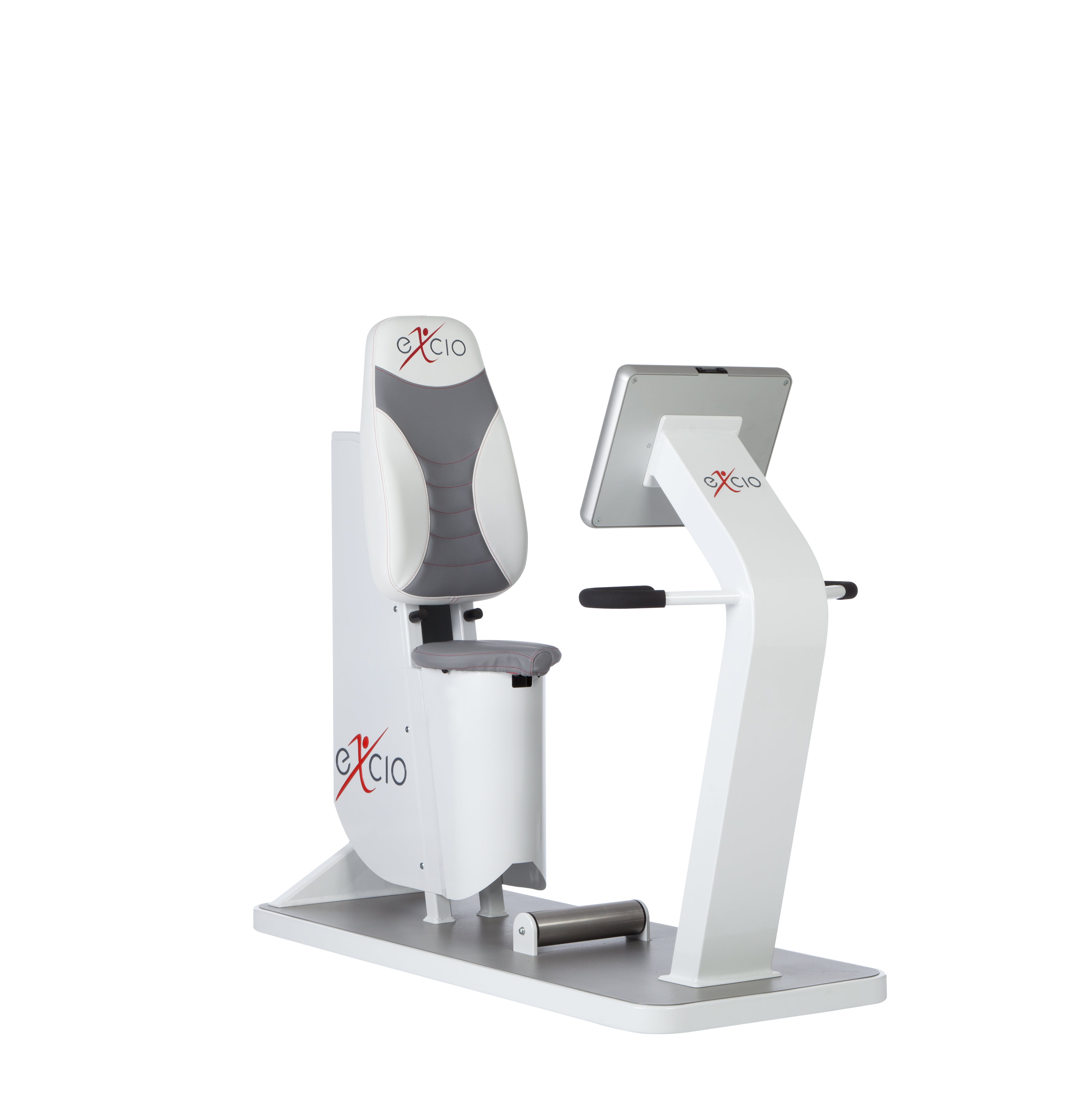
excio from Germany is a rehabilitation trainer to pelvic floor muscles, dedicated to improving or preventing pelvic floor muscle dysfunctions.
Feature 1: optimal training without intimacy contact
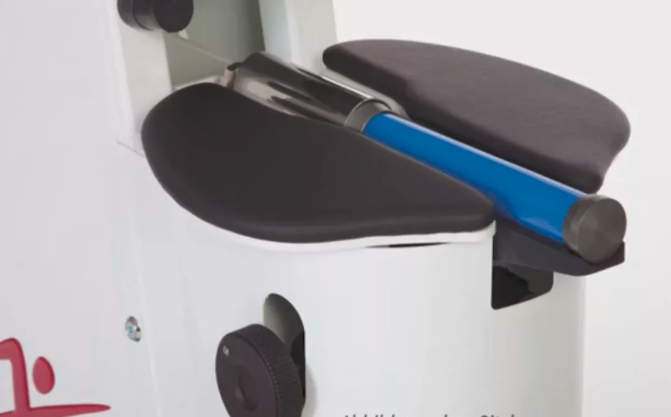
The pressure sensor mounted into the seat of excio can register the muscle contraction and relaxation of the trained, therefore, it is applicable to anyone who has pelvic floor dysfunctions, and they can train in normal street wear.
For medical facilities, excio does not require a separate room to be operated. Compared with the invasive approach, excio simplifies the sterilization process, and many of the contraindications will not get in the way, allowing the patient to start pelvic floor training earlier as they want.
On the other hand, as for the question "Do the pressure changes come exclusively from the pelvic floor muscles, or are they compensated by other muscles?”, the Fresenius University of Applied Sciences in Cologne conducted a study for it and found that: during the tensing and relaxing of pelvic floor muscle, the pressure sensor detected very low activity in the abdominal internal oblique muscle, gluteus maximus and longissimus muscles. Therefore, the possibility of "falsifying" the training results through contractions of other muscles can almost be ruled out.

Y-axis: muscle activity %MVC , X-axis: pelvic floor, abdominal internal oblique muscle, gluteus maximus, longissimus
Feature 2: Visual biofeedback- pelvic floor muscle training, all under your observation
The pressure sensor registers the muscle contraction and relaxation of the pelvic floor and visualizes it on a touch screen in front of the person using the training device. The user can see the preset training curves and adjust the tensing of muscles at the same time.
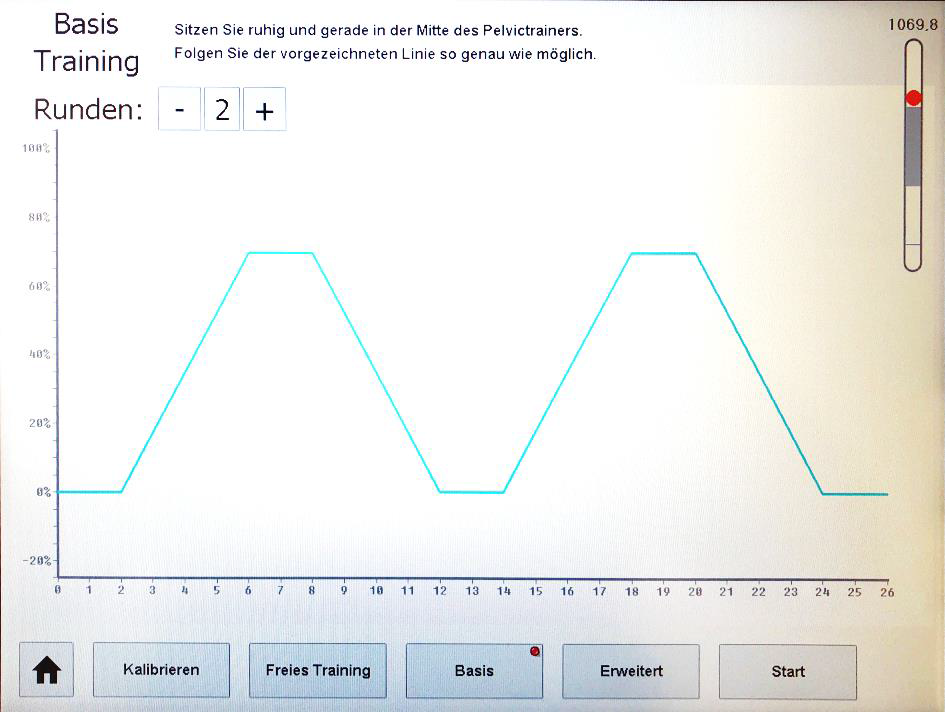
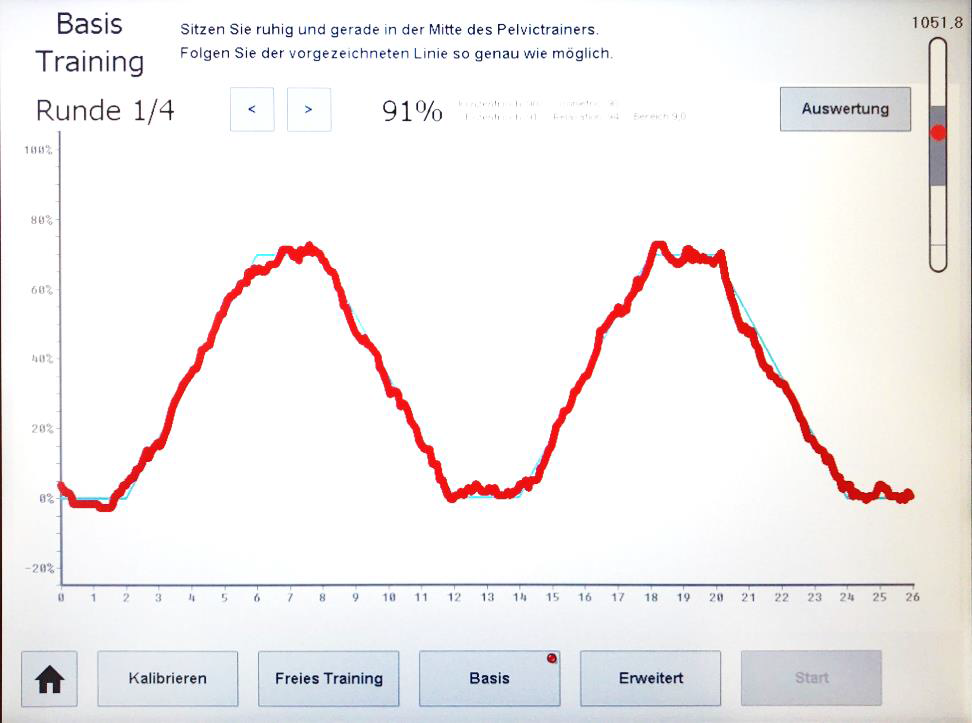
Basic training mode: The training curve is generated according to the preset training program; the contraction and relaxation of pelvic floor muscle is registered and visualized on the touch screen for biofeedback training.
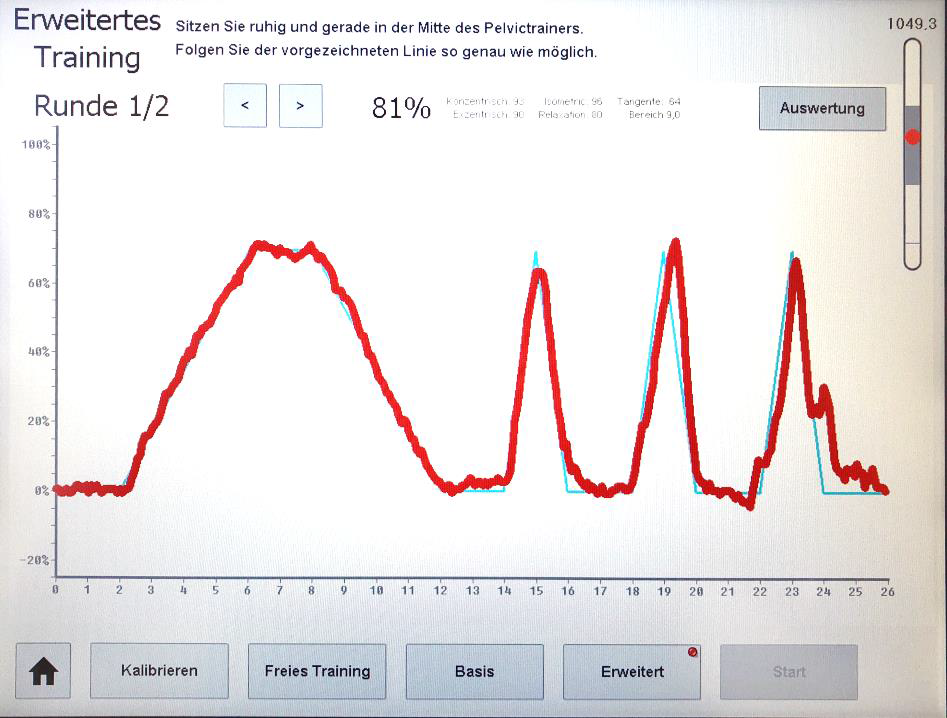
Advanced training mode: In addition to basic training, there is rapid contraction training.
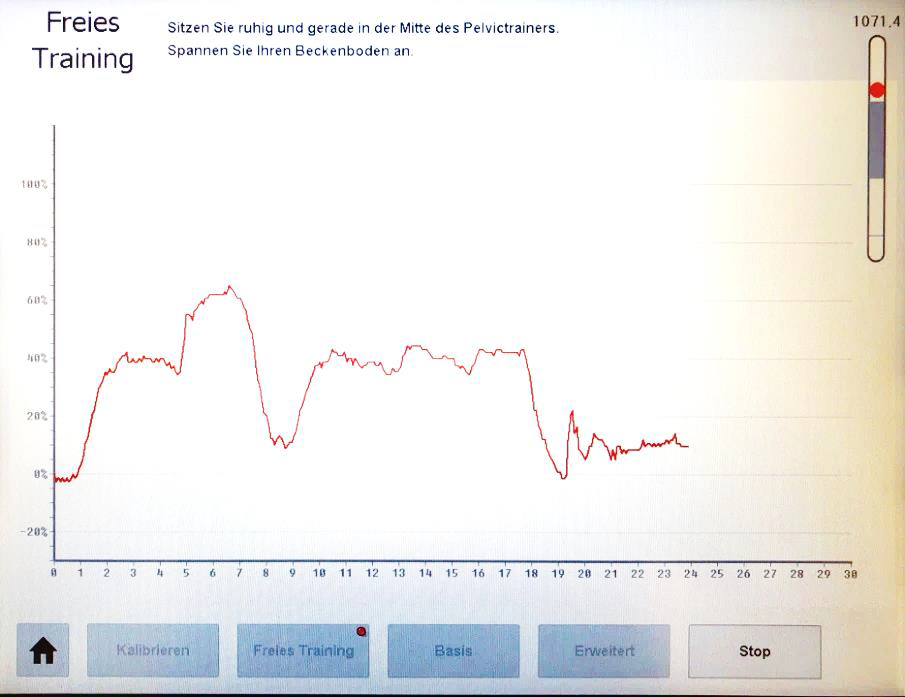
Free training mode: free contraction and relaxation training as needed.
The excio PT04 also has automatic sensor adjustment, automatic calibration and motivating game functions.







